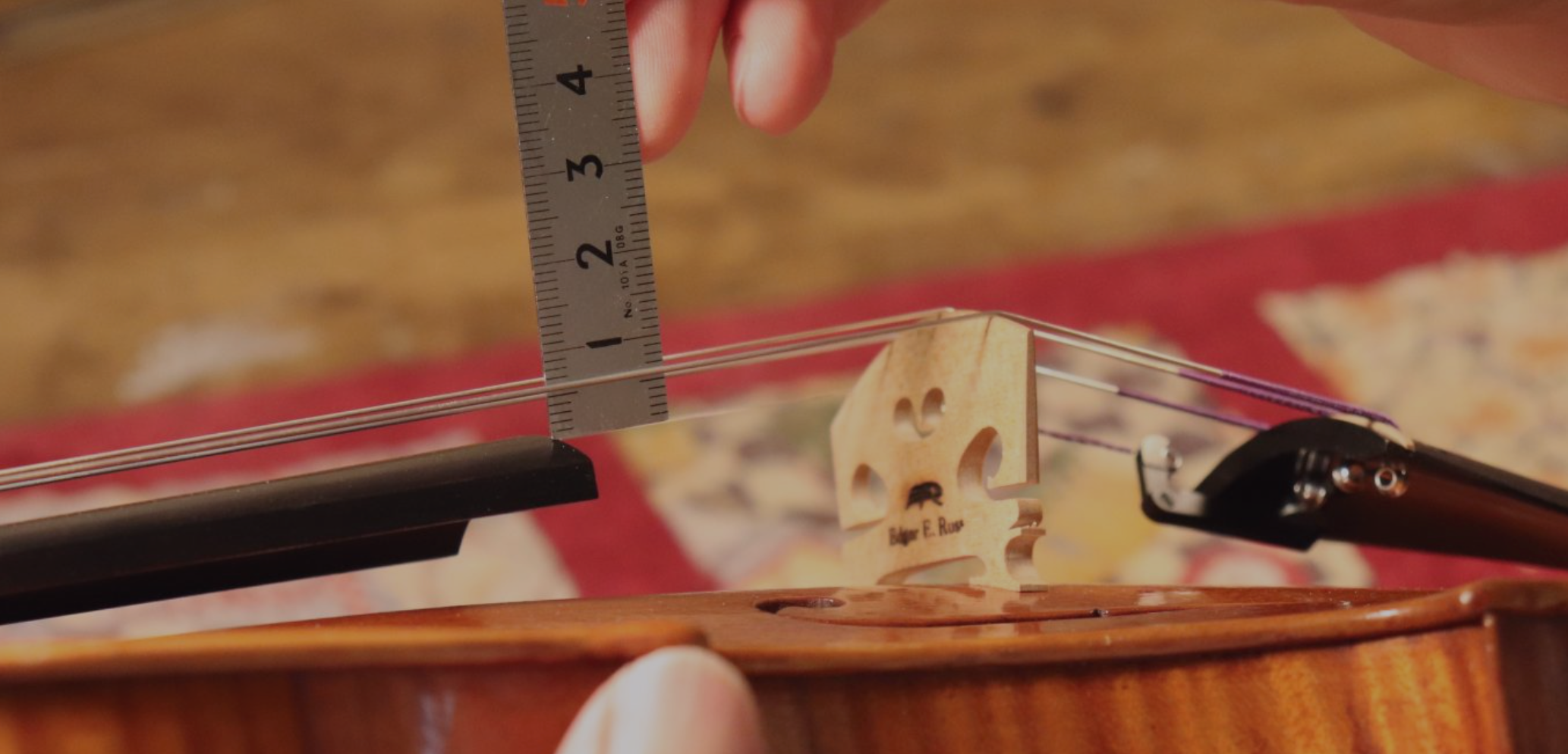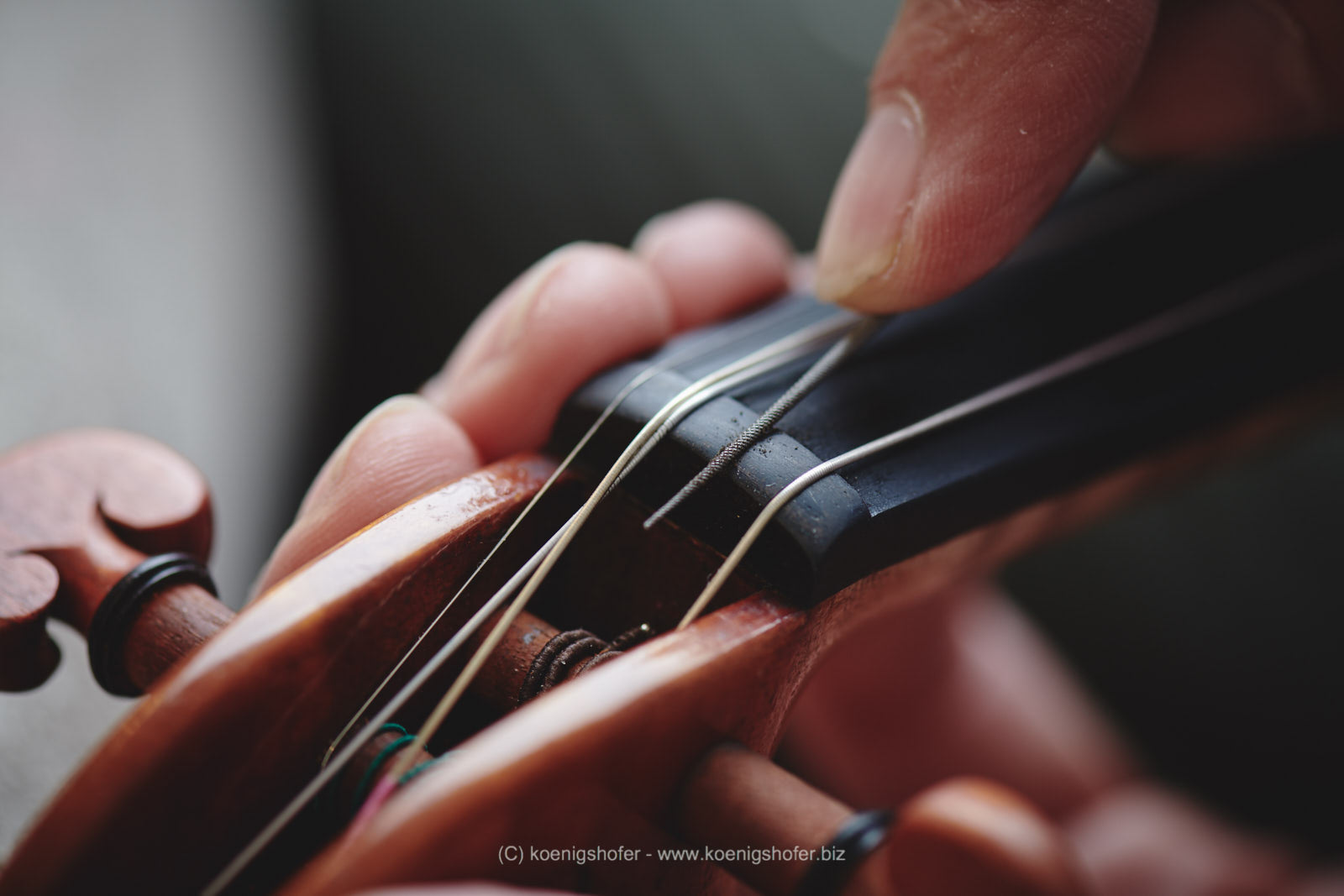
The perfect String Height
The string height makes part of the sound adjustment since it interferes directly with the angle of the strings over the bridge. But besides this impact you as a musician have to keep up with the consequences. If the string height is too high, on one hand it might hurt for beginners, while on the other it is loved by professionals. As a matter of fact, there is not the correct measurement which fits for everybody worldwide.
Science is helping us and we all know more about the acoustics of bowed string instruments. That’s why we know that a “low bridge” and therefore a string which is less angled over the bridge, increases the sound properties. It is very common among musicians as well as violinmakers thast they believe that a higher bridge increases the sound quality.
of every instrument since the bridge is less kept in one position and can vibrate free in all direction. While if the ridge is rather high a more angel bridge is vibating more only up and down and therefore
Here below my good starting measurements which might fit most of you to guarantee to get the best out of your instrument:
- for Violin: 4 mm on E string, 5.5 – 6 mm on G string.
- for Viola: 4.5 – 5 mm up to 7 – 8 mm.
- for Cello: 4 – 5 mm / 8 – 10 mm.
- for Doublebass: 7 mm up to 12 mm.
Watch my video on the perfect string height:




1 comment
Doesnt change of string height changes slightly strings length from beginning of neck to bridge thus affect the proportions and position of where to press string to play cerfain tone (A,b,c,d…) and making it non standard for every musician. Musicians will find that they have to slightly move finger where they expected to play in tune?
Antoni Nguyen
Leave a comment
This site is protected by hCaptcha and the hCaptcha Privacy Policy and Terms of Service apply.